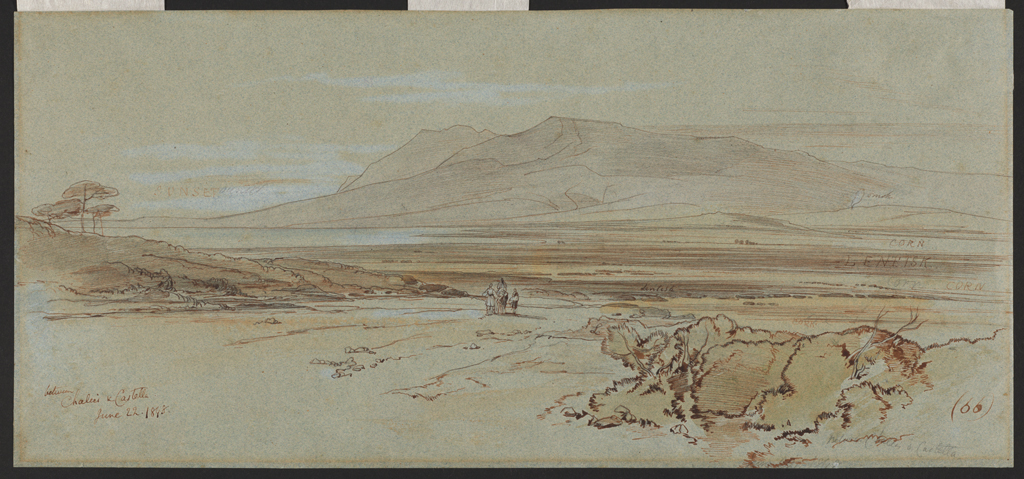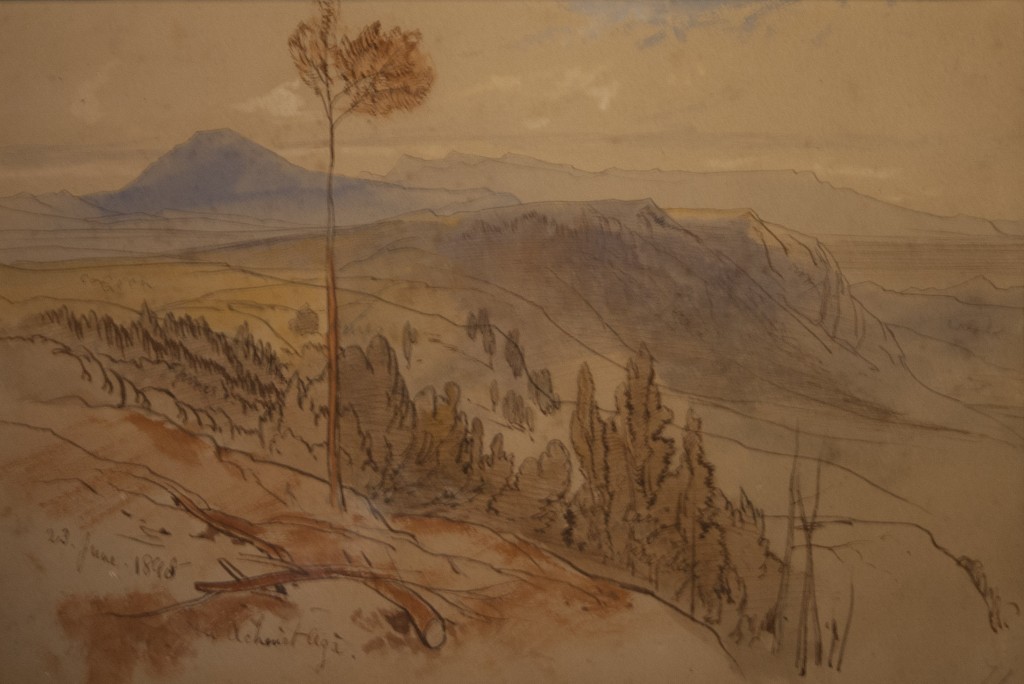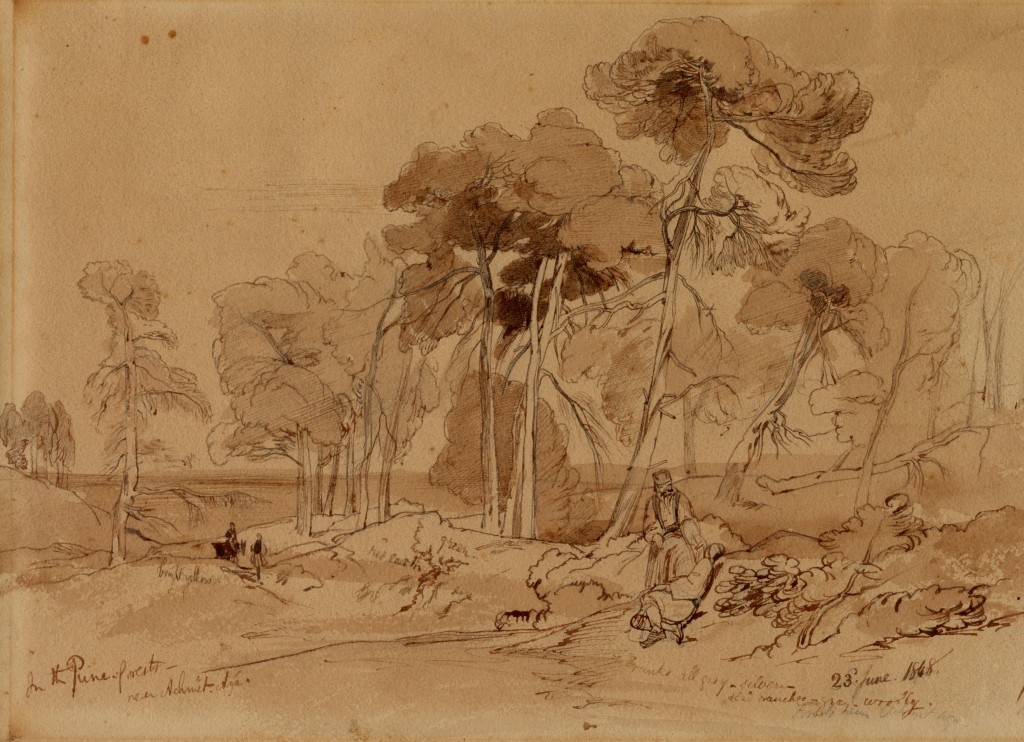Thursday 22 June
Off by 5 a.m. Oleanders, plane trees, stream, lanes — all very pleasant. Pines every[where?] — very beautiful scenery. Yet that of yesterday afternoon I have hardly ever seen equalled, so clearly and finely drawn were all the lovely sunset distances. Never saw I one more exquisitely beautiful! Its pale, corn-green space dotted innumerably with long lines of dark Lentisk, and bounded by purple wooded hills, lilac Dirphe over all. {sketch 66}

TypDr 805.L513.48g , reproduced by permission of the Houghton Library, Harvard
Janni overtook us an hour from Castella, bringing our washed clothes from Chalcis, with rumours of rows at Zeituni [Lamia] and Thermopylae. C. went to the sea to bathe; I rode on, and had just time to make a sketch before sunset. {sketch 68} The wholly classic tone of all one sees is amazing! Shepherds, labourers, crooks, tunics, etc. {sketches 67, 68}. After a wash, I enjoyed tea. A long day, but interesting. Stork,[32] on top of Cypress.

Private Collection
[32] This was probably the first time Lear had seen a stork in the wild or (in the entry for 23 June) in flight. He had made many ornithological drawings of storks (from captive or preserved specimens) for John Gould’s Birds of Europe (1837) and storks continued to feature in his Nonsense alphabets and stories.


